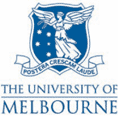The Utility Grid Project: Autonomic and Utility-Oriented Global Grids for Powering Emerging e-Research Applications
Introduction
Grid computing is emerging as an enabler for the creation of
global Cyberinfrastructure for e-Research applications and is
recognised as one of the top five emerging technologies that will have
a major impact on the quality of science and society over the next 20
years. This International Science Linkage (ISL) Project, funded by the Australian Department of Education, Science and Training (DEST) from Nov. 2006-Dec. 2009, links Australian researchers with international
researchers primarily through (1) two EU FP6 projects: CoreGrid and CatNets, (2)
Chinese Grid project (ChinaGrid),
(3) Indian Grid project (Garuda),
and (4) American AutoMate.
The project is aimed at enhancing the scope and depth of Australian
R&D in Grid computing and e-Research; establishing linkages to
enable the leveraging of the capabilities and resources of both
Australian and international partners; and developing grid technologies
that improve agility and utility of national and international
Cyberinfrastructure powering e-Research applications.
This project aims to produce basic scientific discoveries and turn them into commercial outcomes through the development of:
- an advanced grid application development environment that supports the linking of distributed scientific models and resources;
- an economic-based and self-organising autonomic layer that overlays network architectures and systems for Internet-based enterprise and global Grids;
- economic-based grid protocols for service negotiation and resource allocation;
- algorithms for decentralised resource management and application scheduling on global grid environment;
- Grid middleware for composing and deploying e-Research applications on utility-driven enterprise and global grid computing environments; and
- e-Research application demonstrators in Geophysics and life sciences areas.
The project milestones are:
- Analysis of Next Generation Grid Architectures and e-Research Applications
- Core Grid Economic Infrastructure and Protocols for Service Negotiation
- GridSuperscalar support for the Gridbus broker
- Modelling and Simulation of Utility Grids using GridSim Toolkit
- Broker as a User Agent within Utility Grids for Coordinated Resource Allocation
- e-Research Application Development and Deployment
- Dissemination, Commercialization and Next Steps
The Project Manager
- Rajkumar Buyya, The University
of Melbourne, Australia
Project Partners/Collaborators
Project Host- The University of Melbourne, Australia
- Belfast e-Science Centre, The Queen's University of Belfast, UK
- French National Institute for Research in Computer Science and Control (INRIA), France
- Universität Bayreuth, Germany
- Universitat Politècnica de Catalunya, Spain
- Welsh e-Science Centre, Cardiff University, UK
- Centre for Development of Advanced Computing (C-DAC), India
- Satyam Computer Services Ltd.
- Huazhong University of Science and Technology (HUST), China
- Rutgers, The State University of New Jersey, USA
Australian Partners
- The University of Adelaide, Adelaide
- Deakin University, Geelong
- Intrepid Gepphysics, Melbourne
- Royal Melbourne Institute of Technology (RMIT) University, Melbourne
- Swinburne University of Technology, Melbourne
- Tjurunga Research Pty Ltd, Melbourne
- Victorian Partnership for Advanced Computing (VPAC), Melbourne
Project Publications
- Chee Shin Yeo, Rajkumar Buyya, Marcos Dias de Assunção, Jia Yu, Anthony Sulistio, Srikumar Venugopa, and Martin Placek, Utility Computing on Global Grids, Chapter 143, Hossein Bidgoli (ed.), The Handbook of Computer Networks, ISBN: (978-0-471-78461-6, John Wil ey & Sons, New York, USA, 2007.
- James Broberg, Srikumar Venugopal, and Rajkumar Buyya, Market-oriented Grids and Utility Computing: The state-of-the-art and future directions, Technical Report, GRIDS-TR-2007-16, Grid Computing and Distributed Systems Laboratory, The University of Melbourne, Australia, August 13, 2007.





